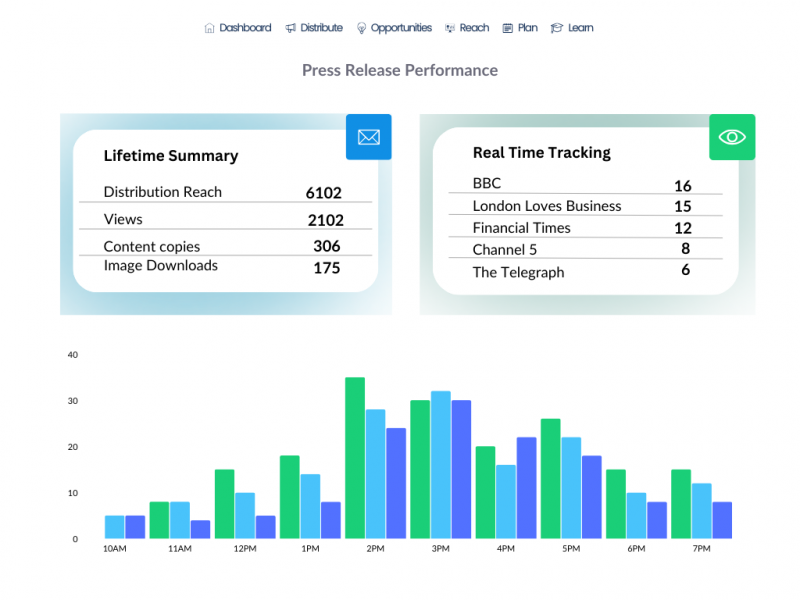
Agencies and PR professionals know how difficult it is to check for a Press Release’s Reach. PR isn’t a guaranteed immediate success tool but one that requires a few months to build up a company’s profile. In many cases, a press release gets published, and the company won’t even know. In this post, we wanted to show how we helped our clients with their reporting.
A better Analytics tool
After collecting input from agencies and PR freelancers using our Platform, we realised that the main concern is how to showcase results to their clients. So, a few months ago, we launched Reach, our inhouse analytics tool for tracking press release interactions. As well as the number of emails sent and opened, Reach tracks live interactions with a press release, such as clicks, image downloads, and content copying.
How? If you send a press release via the platform, the article gets published in a press room and from there, the analytics can track live interaction and where the interactions come from. If you share the article in social media, Reach will also track the number of clicks when someone accesses the article from there.
Reach
Todays’ world is fast paced when it comes to PR. You can send 5000 emails or just 1 and the behaviour will be the same; you only have a few seconds to win a journalist’s attention. In the past PR was about writing good quality press releases. Now, it is a game of numbers, speed and quality. So, don’t be afraid to choose sectors in accordance with the story as well as the company sector you are writing about.
The highest rate for opening emails will no doubt happen on the same day of release. With only a few seconds to win a journalist’s attention, the subject of the email needs to be clear but also engaging. If you are using JournoLink, the subject is always your headline. When checking how many emails were opened, if it falls below 10% rate, you may want to think about spicing up the headline for your next one. Bear in mind that most journalists will also have strong anti-spam settings in place.
Interactions
When you publish an article anywhere on the internet, it is made public. How people find it and read your article is the hardest thing to achieve. Checking the interactions lets you know how many people have actually clicked or done something with your press release online. Some journalists might just save your article in their favourites to use it later or in the next issue of a publication.
As well as checking for the ‘verified’ interactions, you should also keep an eye on the ‘unverified’ numbers. This shows you that someone has found your article without clicking on it from the email you’ve sent. It is usually via a Search Engine but maybe they got a link from someone who received your email and shared with another journalist, who you don’t have as a contact.
Analysing Reach
Once you have enough information, you can compare the results with older press releases and observe what has made a bigger impact. Which press release had a better opening rate? Which sectors you had better results with? Which one gave you the highest unverified interactions?
With this information to hand, you can advise the client better and create a strategy that will show results.
